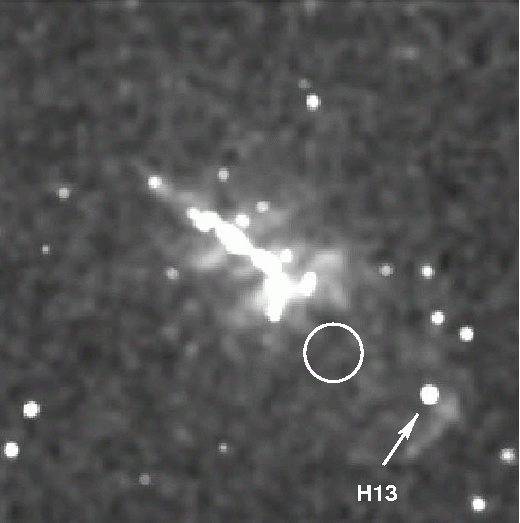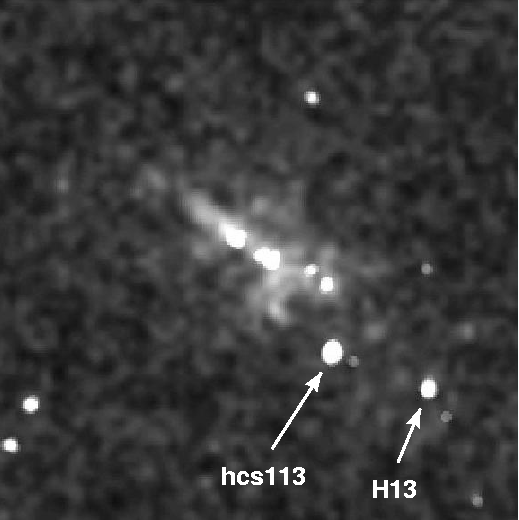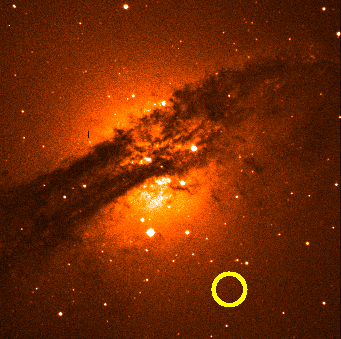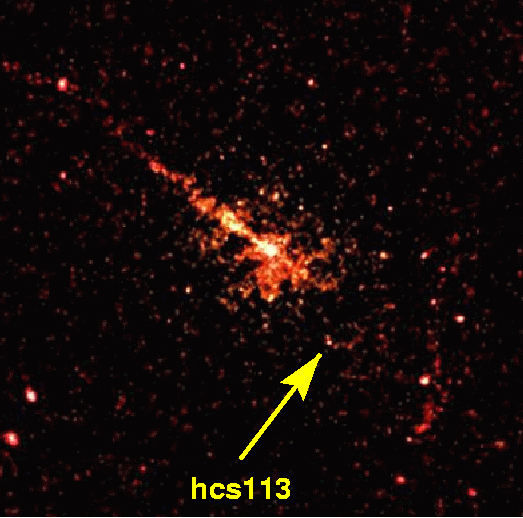Transients in Centaurus A
Supernovae :
1986G, SN Type Ia
2016adj, SN Type IIb (Holoien et al. 2017) or Type Ib, or in transition from IIb to Ib (Banerjee et al. 2018)
[to follow]
First reported X-ray transient :
In a letter to Astronomy & Astrophysics (2000, Astronomy & Astrophysics Letters, 357, L57), H. Steinle, K. Dennerl and J. Englhauser from MPE report their detection of a bright X-ray transient (designated 1RXH J132519.8-430312) towards the direction of Centaurus A in ROSAT HRI data taken several years ago.
In July 1995, a multiwavelength campaign took place to observe Cen A (NGC 5128) from radio to gamma rays. During five ROSAT HRI observations, a bright X-ray source was detected 2'.5 south-west of the nucleus of NGC 5128 in the outer regions of the elliptical galaxy. At that time, it was the brightest point source in the ROSAT HRI field of view.
All other ROSAT HRI observations made in 1990, 1994 and 1998 show no trace, even if combined, of the source, suggesting that this is a highly variable object.
Chandra observations of Centaurus A made in 1999 and 2000 (Kraft et al. 2001) show this object (named CXOU J132519.9-43031) to vary between the observations by a factor of 500.
Given the high luminosity and variability of the object, it may be able to mimic variations of the whole galaxy in X-rays if not spatially resolved from the nucleus (as was the case in early-days X-ray instruments).
(All images are shown at the same scale. They show the central part of NGC 5128 in the centre and the X-ray jet pointing towards north-east. The location of the transient is marked with arrow and circle.)
The derived coordinates (uncertainty 5") are
- R.A. = 13h 25m 19s.8
- Declination = -43o 03' 12"
Published Chandra images of Cen A taken in October 1999 show a weak source (CXOU J132519.9-43031) at the ROSAT position, which may be the persistent counterpart of the transient.
If at a distance of 3.0 Mpc, the luminosity of 1RXH J132519.8-430312 in the energy band 0.1—2.4 keV would be 3 x 1039 erg s-1, assuming a power-law spectrum with photon index -2 and no additional intrinsic absorption in NGC 5128. This is above the Eddington luminosity of most X-ray binaries, but still within the observed range of luminosities. Therefore, it cannot be ruled out that the transient is located in NGC 5128.
Other reported X-ray transients :
[to follow]



